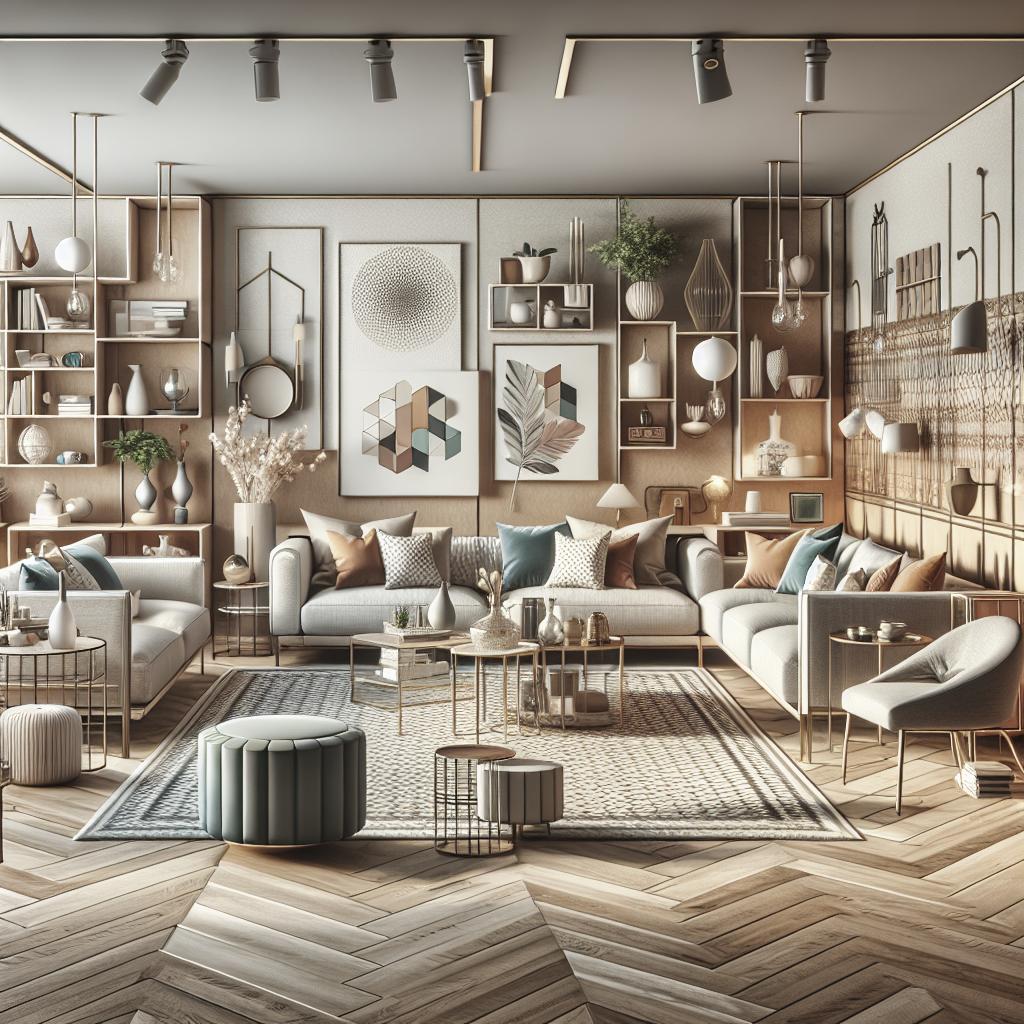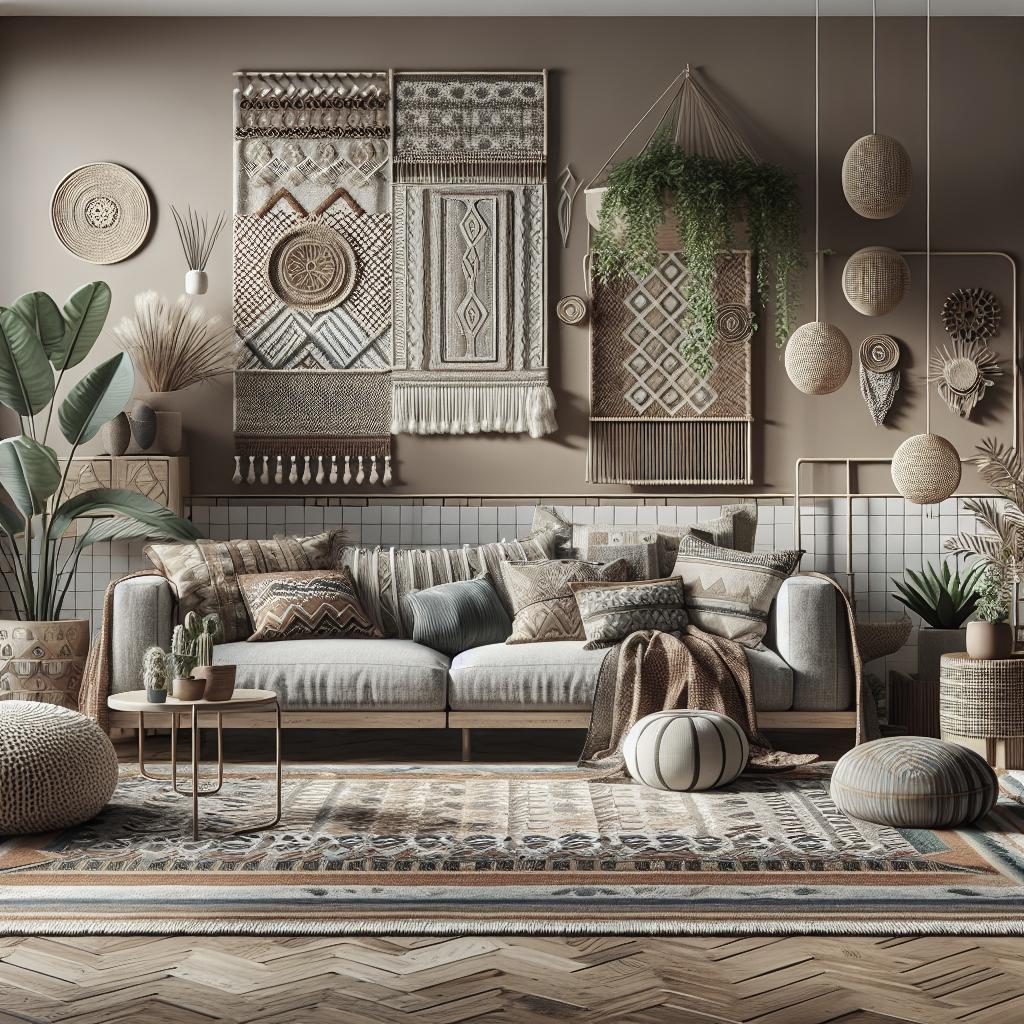In the world of interior design, balance is key to creating spaces that are both aesthetically pleasing and functional. While symmetry offers a traditional approach to achieving balance, asymmetry introduces dynamic elements that can add character and interest to a room. This blog post explores the concept of asymmetry in interior design, providing insights into how it can be effectively used to create spaces that feel harmonious despite their lack of uniformity. We will delve into the interplay between radial symmetry and radial balance, the different forms of balance that can be employed in interior design, and how both symmetry and asymmetry can be leveraged to create a cohesive look. By understanding these principles, homeowners and designers can craft interiors that not only look visually appealing but also provide a balanced environment that enhances the usability and enjoyment of a space. ### Radial Symmetry And Radial Balance Radial symmetry in interior design refers to elements arranged around a central point, creating a circle of balance. This technique is often employed in spaces where a central focal point, such as a chandelier or a round dining table, serves as the heart of the room. Radial symmetry promotes a sense of harmony, guiding the eye naturally around the space without overwhelming it with multiple focal points. This form of symmetry is ideal for rooms that require a sense of order and unity, making it suitable for formal areas like living rooms or large foyers. However, radial symmetry is not just about replicating a formal aesthetic; it can also be creatively adapted to more casual settings. By varying textures, colors, and finishes while maintaining the overall symmetrical arrangement, designers can achieve a balanced look that feels both structured and relaxed. This approach is particularly effective in open floor plans where the radial arrangement helps delineate different functional zones while maintaining an open and cohesive flow. ### Mastering the Art of Creating Balance in Interior Design Creating balance in interior design is an art that requires a keen eye for how different elements interact within a space. Balance refers to the distribution of visual weight across a room, ensuring no one area feels overly heavy or vacant. Achieving this requires an understanding of main elements, such as color, form, and texture, and how they contribute to the overall feel of a room. Balance can be achieved symmetrically, asymmetrically, or through radial symmetry, depending on the desired outcome. Understanding the fundamentals of balance involves recognizing the impact of each piece within a room and ensuring that all components work together to form a cohesive whole. For instance, a large piece of artwork might be balanced by a group of smaller frames on the opposite wall, or a vibrant couch could be offset by more neutral-toned furniture. Mastering these techniques allows designers and homeowners to create spaces that are not only visually appealing but also comfortable and functional. ### Different Forms of Balance in Interior Design In interior design, balance can be categorized into three main types: symmetrical, asymmetrical, and radial. Symmetrical balance is achieved when elements are mirrored on either side of a central axis, offering a classic, harmonious look. This approach is often used in traditional interiors where formality and order are paramount. Asymmetrical balance, on the other hand, uses different but visually equally weighted elements to create visual interest and movement without immediate symmetry. It is often utilized in modern or eclectic spaces to introduce a dynamic and casual feel. Radial balance, as previously discussed, revolves around a central focal point, with all elements emanating outward evenly. Each type of balance can be employed in various capacities within a single space or across different rooms in a home, depending on the desired aesthetic and functional needs. By understanding these forms of balance, one can experiment with different design approaches to achieve the desired atmosphere and visual appeal. ### Balance Through Symmetry Symmetry in interior design involves the even distribution of objects on either side of a central line, creating a mirror-effect that conveys stability and order. Common in traditional styles, symmetrical balance brings formality to a space, providing clarity and ease to the eye. This form of balance is particularly effective in creating calm and serene environments, as it enables predictability and ease of movement within a space. Although symmetry can sometimes appear rigid or limiting, it offers a necessary framework within which creativity can flourish. By playing with varying sizes, textures, and colors while maintaining a mirror-image layout, designers can produce spaces that are both orderly and captivating. For those seeking to imbue a sense of harmony and tranquility in a room, symmetrical balance offers a fundamental approach that reigns supreme. ### Balance in Asymmetry Asymmetry introduces an exciting element to interior design that breaks free from traditional norms. It allows for the creative placement of elements that are unalike yet achieve balance through their visual weights and interactions. Asymmetry is achieved when dissimilar items on either side of a room are balanced against each other to create cohesion. This more relaxed form of balance is often sought in contemporary spaces where individuality and expression take precedence over formality. To effectively use asymmetry, one must understand the visual weight of different components such as color, shape, and texture. For instance, a bold, colorful piece on one side of a room might be offset by a group of smaller items in neutral tones on the opposite side. The key is to ensure the room doesn’t feel visually lopsided but rather maintains a dynamic interplay that draws the eye naturally across the space. When done correctly, asymmetry can make a room feel vibrant and full of character. ### Creating a Balanced Look in Your Home Achieving a balanced look in the home requires thoughtful consideration and a willingness to play with different styles and configurations. Begin by identifying the primary areas of visual interest in the room and consider how these can be visually balanced with other elements. This can be done through the arrangement of furniture, art, lighting, and accessories, ensuring that there is harmony in the diversity. One effective way to achieve balance is to mix and match symmetrical and asymmetrical elements throughout a space. For example, pair a symmetrical arrangement of furniture with asymmetrical artwork or an eclectic mix of decorative items. By doing so, you create a nuanced space that feels both organized and lively. Remember, balance is about creating a sense of equilibrium that resonates with the people inhabiting the space, making it crucial that personal tastes and comfort are prioritized. ### What Did We Uncover About Symmetry and Balance? Through exploring the concepts of symmetry and balance in interior design, we’ve identified the importance of these principles in creating spaces that are not only aesthetically pleasing but also functionally effective. Symmetry offers an approach grounded in order and predictability, often seen in traditional settings, while asymmetry brings a breath of fresh air with its ability to surprise and engage in contemporary spaces. Each form of balance—symmetrical, asymmetrical, and radial—offers distinct advantages that can be tailored to individual tastes and needs. Ultimately, the key to successful interior design lies in understanding how these aspects can be used in conjunction to build spaces that are dynamic yet cohesive. As homeowners and designers continue to push the boundaries of traditional design, embracing asymmetry alongside symmetry offers an exciting avenue for innovation and individual expression. “`html
| Concept | Description |
|---|---|
| Radial Symmetry and Balance | Involves arranging elements around a central point for harmony and flow. |
| Creating Balance | Understanding how different elements interact to distribute visual weight across a space. |
| Forms of Balance | Symmetrical, asymmetrical, and radial balance, each offering unique design opportunities. |
| Balance Through Symmetry | Symmetrical arrangements provide stability and order, especially in traditional interiors. |
| Balance in Asymmetry | Uses diverse elements of similar visual weight to achieve dynamic equilibrium. |
| Creating a Balanced Home | Combining symmetry and asymmetry to craft inviting, cohesive living spaces. |
“`


